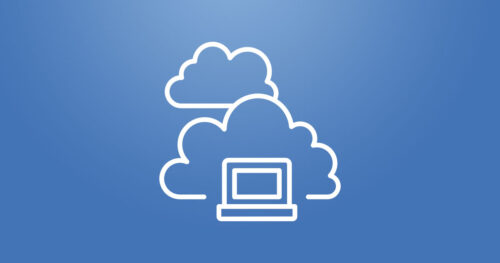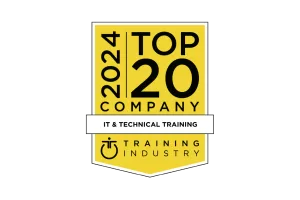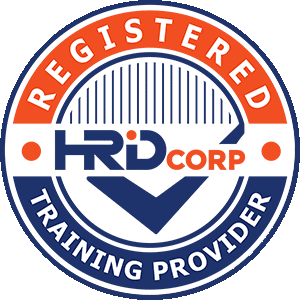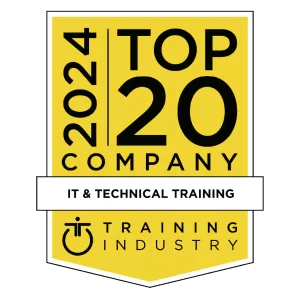This course teaches database administrators various features they must be familiar with as DB2 11 for z/OS Database Administrators. These include program preparation, online schema changes, user defined functions, archive-enabled and temporal tables, partition management, stored procedures, and triggers. The course includes many hands-on demonstrations which give the students experience with the included topics. Additionally, there is information on other features in the course appendices, including schemas and user defined data types, clone tables, materialized query tables, large objects, global variables, and row permissions and column masks. This course is a follow-on course to CV832 IBM DB2 11 for z/OS Database Administration Workshop Part 1. Note: This course is 3 days in length. If the instructor has time, he can cover the optional appendices as desired.
-
This course covers the concepts and implementation details of the software-defined networking and storage features of PowerVC on IBM Power Systems servers, known as IBM Cloud PowerVC Manager Software Defined Infrastructure (SDI). Students learn to implement a PowerVM infrastructure with software-defined storage based on IBM Spectrum Scale using NovaLink in SDE-mode, and software-defined networking based on Open vSwitch (OVS). Methods for capturing, deploying, and managing virtual machines in a software defined infrastructure are also explored.
-
This TX319G: IBM Workload Scheduler 9.4 Operations and Scheduling course introduces IBM Workload Scheduler features, environment, and terminology. You learn about distributed environments and how to use both the Dynamic Workload Console and command-line interfaces with Workload Scheduler. You monitor production workflow and create a production day plan. Production workflow consists of job and job stream instances, designed with plan objects. You manage changes to objects, the plan, jobs, events, and job streams. You optimize production workflow and troubleshoot plan problems. You also learn to use Workload Scheduler with classic batch scheduling and dynamic and event-driven workloads.
-
This unit shows how to create Entry Templates using Entry Template Manager and to add items to the repository using these templates. You will also learn how to customize the property layouts, associate an entry template to a folder, and configure entry template management.
If you are enrolling in a Self Paced Virtual Classroom or Web Based Training course, before you enroll, please review the Self-Paced Virtual Classes and Web-Based Training Classes on our Terms and Conditions page, as well as the system requirements, to ensure that your system meets the minimum requirements for this course.
-
This course introduces the features and components provided with IBM Case Foundation 5.2.1. IBM Case Foundation 5.2.1: Introduction (F230G) covers:
- Introduction to Basic elements of FileNet workflow applications.
- Introduction to the administrative tools used to administer FileNet workflow applications.
- IBM Case Foundation architecture.
IBM Case Foundation 5.2.1: Introduction (F230G) is the first course in in the series of courses available for IBM Case Foundation 5.2.1
If you are enrolling in a Self Paced Virtual Classroom or Web Based Training course, before you enroll, please review the Self-Paced Virtual Classes and Web-Based Training Classes on our Terms and Conditions page, as well as the system requirements, to ensure that your system meets the minimum requirements for this course.
-
This IBM SS84G: DFSMS Implementation course provides the skills required to plan and implement Data Facility Storage Management Subsystem (DFSMS). A step-by-step implementation strategy, emphasizing coexistence considerations, is reinforced by hands-on labs. In the hands-on labs, students will be creating constructs as well as coding ACS routines. This milestone approach includes managing temporary and permanent data sets. The course also discusses exploitation of functions provided by DFSMS as the installation evolves to the DFSMS environment.
-
This WM213G: IBM MQ v9 Advanced System Administration (Distributed) course expands the basic skill sets that are developed in courses WM103/ZM103, Technical Introduction to IBM MQ, and WM153/ZM153, IBM MQ V9 System Administration (using Windows for labs) or WM154, IBM MQ V9 System Administration (using Linux for labs).
The course focuses on advanced features of IBM MQ, such as implementing workload management by using a queue manager cluster, and authenticating connections, channels, and users. It also covers securing channels with Transport Layer Security (TLS), advanced client connection features, event and message monitoring, and publish/subscribe administration.
In addition to the instructor-led lectures, you participate in hands-on lab exercises that reinforce lecture content. The lab exercises give you practical experience with tasks such as implementing security, configuring workload management for a queue manager cluster, and advanced troubleshooting techniques.
Completing this course can also help you prepare for the appropriate IBM MQ Administrator certifications.
-
System z continues to extend the value of the mainframe by leveraging robust security solutions to help meet the needs of today’s on demand, service-oriented infrastructures. System z servers have implemented leading-edge technologies, such as high-performance cryptography, multi-level security, large-scale digital certificate authority and life cycle management, improved Secure Sockets Layer (SSL) performance, advanced Resource Access Control Facility (RACF) function, and z/OS Intrusion Detection Services. This advanced z/OS security course presents the evolution of the current z/OS security architecture and explores in detail the various technologies involved in z/OS Cryptographic Services, z/OS Resource Access Control Facility (RACF), and z/OS Integrated Security Services.
In the hands-on exercises, you begin with your own z/OS HTTP Server in a TCP/IP environment. Throughout the exercises, you make changes to the configuration to implement authentication by using RACF, SSL and the use of digital certificates. Use is made of facilities such as RACDCERT to manage digital certificates, PKI Services and RACF auto registration. You will also implement different scenarios to implement ssl security for a typical tcpip application; FTP: SSL, TLS, server authentication, client certificates and AT-TLS. These exercises reinforce the concepts and technologies being covered in the lectures.
-
This course covers advanced topics to aid in the preparation of data for a successful data science project. You will learn how to use functions, deal with missing values, use advanced field operations, handle sequence data, apply advanced sampling methods, and improve efficiency.
-
This course teaches you navigation, operation, and recovery techniques for the Hardware Management Console (HMC) in the System z environment. Through lecture and hands-on exercises, you learn setup and operating procedures for the HMC, gain in-depth problem determination skills, practice HMC operations, and utilize recovery capabilities provided by the System z servers.
-
This course guides students through the fundamentals of using IBM SPSS Statistics for typical data analysis process. Students will learn the basics of reading data, data definition, data modification, and data analysis and presentation of analytical results. Students will also see how easy it is to get data into IBM SPSS Statistics so that they can focus on analyzing the information. In addition to the fundamentals, students will learn shortcuts that will help them save time. This course uses the IBM SPSS Statistics Base features.
-
This course will teach about the InfoSphere Change Data Capture (CDC) component of the IBM InfoSphere Data Replication family of solutions. This course will examine the architecture, components and capabilities of CDC, and discuss various ways to setup and implement the software. This course will explore how to operate and troubleshoot CDC and discuss “Best Practices” in maintaining the Environment. Lastly, use cases will be provided to help student understand how replication is used using InfoSphere Change Data Capture to a Business Environment.






